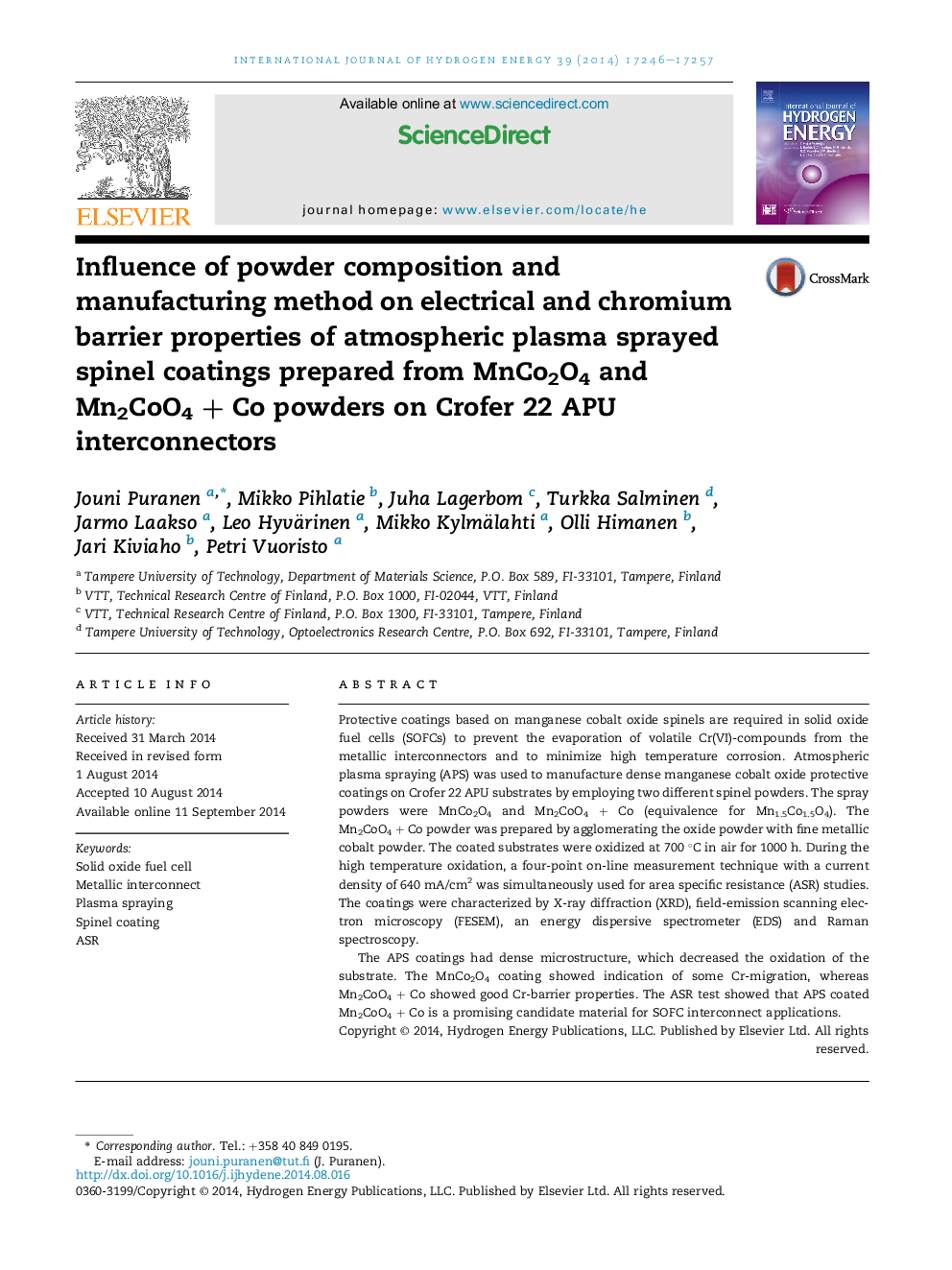| Article ID | Journal | Published Year | Pages | File Type |
|---|---|---|---|---|
| 1272180 | International Journal of Hydrogen Energy | 2014 | 12 Pages |
•MnCo2O4 and Mn2CoO4 + Co decreased the growth of the oxide scale without spallation.•MnCo2O4 coating was not able to prevent Cr-migration and formed MnCoCrO4 spinel.•Mn2CoO4 + Co had excellent Cr-barrier properties and as low as 8.40 mΩ cm2 ASR values.
Protective coatings based on manganese cobalt oxide spinels are required in solid oxide fuel cells (SOFCs) to prevent the evaporation of volatile Cr(VI)-compounds from the metallic interconnectors and to minimize high temperature corrosion. Atmospheric plasma spraying (APS) was used to manufacture dense manganese cobalt oxide protective coatings on Crofer 22 APU substrates by employing two different spinel powders. The spray powders were MnCo2O4 and Mn2CoO4 + Co (equivalence for Mn1.5Co1.5O4). The Mn2CoO4 + Co powder was prepared by agglomerating the oxide powder with fine metallic cobalt powder. The coated substrates were oxidized at 700 °C in air for 1000 h. During the high temperature oxidation, a four-point on-line measurement technique with a current density of 640 mA/cm2 was simultaneously used for area specific resistance (ASR) studies. The coatings were characterized by X-ray diffraction (XRD), field-emission scanning electron microscopy (FESEM), an energy dispersive spectrometer (EDS) and Raman spectroscopy.The APS coatings had dense microstructure, which decreased the oxidation of the substrate. The MnCo2O4 coating showed indication of some Cr-migration, whereas Mn2CoO4 + Co showed good Cr-barrier properties. The ASR test showed that APS coated Mn2CoO4 + Co is a promising candidate material for SOFC interconnect applications.
